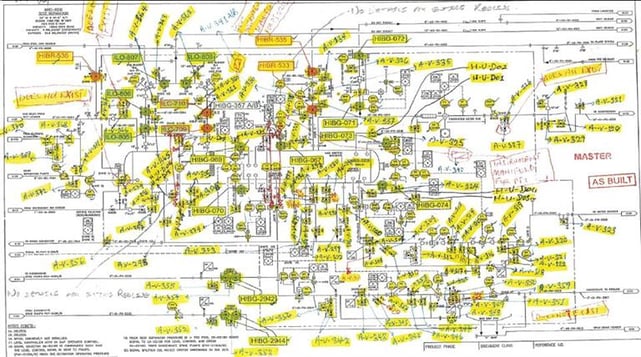How to save time and money whilst verifying assets and collecting key data
After years of working with companies to help build asset registers and develop maintenance management programs, our team has identified a trend of inaccurate and missing asset register data, which can cause significant issues for an operating facility. Without good quality and fully populated base data, assets run the risk of:
- Equipment failing due to no maintenance being assigned or executed
- Spare parts being unavailable due to no visibility on what is required
- No assurance that the integrity of the equipment is being managed, which could result in an incident
In this blog post, we outline the importance of plugging data gaps in your asset register, the challenges associated with traditional data collection methods, as well as a new digital way to streamline data collection and verification from source.
Plugging missing data
“There are a few ways to plug gaps in the asset register. The most effective way to verify and collect critical information would be to complete a physical asset verification (PAV) exercise.
“Now, there is no doubt that “walking the line” can be an extremely laborious task, not only are you expected to visit a massive amount of equipment, but you are also faced with navigating through an operational environment, whilst trying to capture data and verify information.
“But, in our opinion, the benefits associated with a PAV far outweigh the effort required to complete it. Not only will an up to date and accurate asset register enable risks to be managed effectively, but it will also unlock a world of benefits. For example:
- You’ll have correct name plate data for your bill of materials and spare parts, which enables maintenance teams and planners to confidently order the right parts. This eliminates time spent searching, and saves money by preventing you from potentially buying spare parts that are wrong, obsolete, or that you already have in stock.
- All your tags will be accounted for, which enables companies to assign maintenance to them and ensures all equipment is being managed and maintained to help mitigate risk and assure reliability.
- The full visibility of your tags also promotes accurate criticality allocation and allows companies to effectively prioritise maintenance based on risk, likelihood and consequence”
Issues with traditional data collection methods
“PAV’s have been conducted for many years, but there are so many challenges and issues related to this manual process of data collection. To name just a few:
- Using a pen and paper to capture information can be difficult in the field if weather conditions aren’t favourable, if you have to wear gloves, or the environment is challenging (e.g. drips coming from pipes on the platform)
- It can be difficult to incorporate notes taken in the field when back in the office, especially if multiple people were involved with data collection
- Post walkdown data processing can be extremely time consuming
“I have experienced these challenges and frustrations myself – having recently completed a PAV of an offshore facility for a major oil and gas producer in the Americas. We validated on-site equipment and marked up their site drawings in order to update their outdated CMMS database. The main driver of this PAV was to collect the nameplate data so accurate BoMs could be developed, which would in turn, save the operator time and money.
“It was this job that made me think of ways that this laborious and manual process could be improved.
“Below is a drawing we worked on in the field – this example demonstrates how complex a PAV can be, and reiterates the challenges associated with traditional walk down methodologies:

A new digital way to collect and process data
“To overcome these challenges, we recently developed a new mobile application, ePAV™, that eliminates the drawbacks of traditional data collection methods.
“ABL’s ePAV™ app allows companies to conduct a PAV, inventory audit or any field data collection and verification exercise with 4 times more accuracy and in half the time. With standardised and pre-populated data points, the app eliminates human error, standardises data from source and eliminates the need for post walk down data entry and processing.
“In addition to this, and most importantly, the app can be configured to output CMMS loadsheets for efficient implementation into the CMMS of your choice – enabling the benefits of a PAV to be realised quickly.
“I recently conducted a free webinar which you can watch online, where I provide techniques and advice for accurate and efficient data collection and verification, demonstrate how ePAV™ can save companies time and money, and how this mobile app helps field workers collect consistent and truthful data.
